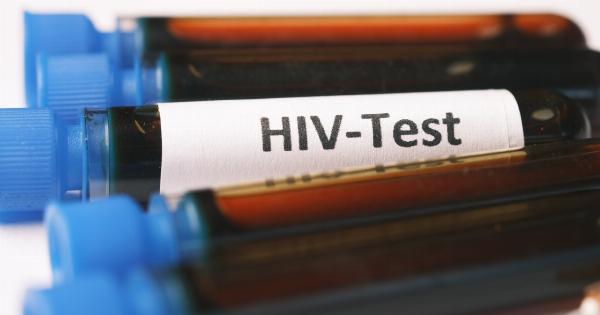HIV (Human Immunodeficiency Virus) continues to be a serious global health issue, with millions of people affected by the disease.
Efforts to find a cure or effective treatment for HIV have been ongoing for decades, and scientists are constantly exploring new avenues and breakthroughs in this field. One such cutting-edge research area is the use of silver nanoparticles in HIV treatment. In this article, we will delve into the potential of silver nanoparticles as a game-changer in the fight against HIV.
Understanding HIV
HIV attacks the immune system, specifically the CD4 cells (T cells), which play a crucial role in fighting off infections and diseases.
Over time, the virus can destroy so many of these cells that the body becomes unable to fight off infections and other illnesses, leading to a condition known as acquired immunodeficiency syndrome (AIDS). Currently, there is no cure for HIV, but antiretroviral therapy (ART) has proven to be effective in managing the disease, allowing individuals with HIV to lead healthier and longer lives.
The Need for Innovative Treatments
Despite the advancements in ART, there are still several limitations and challenges associated with long-term HIV treatment.
These include the need for a strict regimen of medication adherence, potential side effects, drug resistance development, and high treatment costs, particularly in resource-limited settings. Therefore, there is a pressing need for innovative treatment approaches that can enhance the effectiveness of existing therapies and overcome these challenges.
Silver Nanoparticles: An Overview
Silver nanoparticles are tiny particles of silver with sizes ranging from 1 to 100 nanometers. Due to their unique physical and chemical properties, silver nanoparticles have gained significant attention in various fields, including medicine.
They possess excellent antimicrobial properties, making them effective against a wide range of pathogens, including bacteria, viruses, and fungi.
The Potential of Silver Nanoparticles in HIV Treatment
Recent research has focused on exploring the application of silver nanoparticles in HIV treatment.
Preliminary studies have shown promising results, indicating that silver nanoparticles could play a crucial role in enhancing the antiviral effect of existing HIV therapies and potentially acting as a standalone treatment.
Inhibition of HIV Replication
One of the key mechanisms through which silver nanoparticles can combat HIV is by inhibiting viral replication.
Studies have shown that silver nanoparticles can effectively bind to the glycoproteins on the surface of the virus, preventing it from entering target cells and replicating. This inhibition of viral replication can significantly reduce the viral load in HIV-infected individuals.
Protection of CD4 Cells
CD4 cells are critical components of the immune system, and their destruction by HIV is a major cause of immunodeficiency. Silver nanoparticles have been found to protect CD4 cells and prevent their depletion.
By shielding CD4 cells from viral attack, silver nanoparticles can help preserve the integrity of the immune system and slow down the progression of HIV.
Enhanced Drug Delivery
In addition to directly targeting the virus, silver nanoparticles can also improve drug delivery to HIV-infected cells.
By acting as carriers, these nanoparticles can transport antiretroviral drugs to specific sites of infection more efficiently, resulting in enhanced drug efficacy and reduced side effects.
Reduced Drug Resistance
Drug resistance is a significant challenge in long-term HIV treatment. The prolonged use of antiretroviral drugs can lead to the development of drug-resistant strains of HIV, rendering current therapies ineffective.
Silver nanoparticles have shown the potential to mitigate this problem by making it more difficult for the virus to develop resistance. The unique modes of action of silver nanoparticles make it unlikely for the virus to develop resistance against them, ensuring their long-term effectiveness.
Challenges and Future Directions
While the potential of silver nanoparticles in HIV treatment is enticing, there are still several challenges that need to be addressed before they can be widely implemented.
These include issues related to optimal dosage, long-term safety, regulatory approvals, and scalability of production. Further research and clinical trials are necessary to fully understand the efficacy and safety of silver nanoparticles in HIV treatment.
Conclusion
As the search for an effective HIV treatment continues, silver nanoparticles have emerged as a promising avenue.
Their ability to inhibit viral replication, protect CD4 cells, enhance drug delivery, and reduce drug resistance make them an exciting prospect in the fight against HIV. While more research is needed, the potential of silver nanoparticles in HIV treatment offers hope for the millions of people affected by this devastating disease.




























